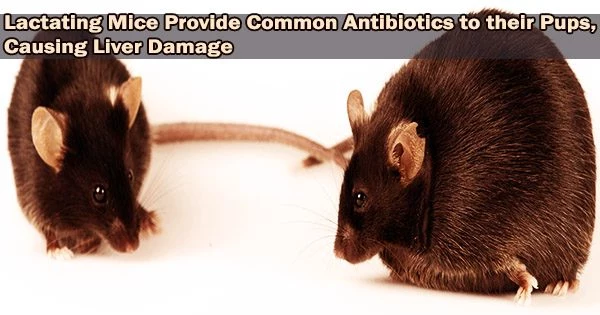In studies on mice, scientists from the University of California San Diego School of Medicine found that nursing mothers exposed their nursing pups to the antimicrobial triclosan, which is frequently found in consumer products, caused early signs of liver damage that could later result in more serious impairment and illness, like nonalcoholic fatty liver disease (NAFLD) and nonalcoholic steatohepatitis (NASH).
The findings published in the July 27, 2022 online issue of Nature Communications.
NAFLD, which affects an estimated 100 million adults in the United States, is the most prevalent chronic liver disease. It happens when fat builds up in liver cells for reasons other than excessive alcohol consumption, compromising organ performance. Although the exact cause is unknown, food and genetics are important contributors. There is a 50 percent chance that an obese person has NAFLD.
About 20 percent of NAFLD patients progress to NASH, a more severe type of illness marked by escalating organ damage and inflammation that can cause cancer, cirrhosis, and liver scarring.
NASH is the fastest-growing cause of liver cancer mortality worldwide, particularly in the Americas, according to a paper written by researchers at UC San Diego that was published in June 2022. Rapidly rising obesity rates are the main cause. According to the Centers for Disease Control, the prevalence of obesity in the U.S. increased from 30.5 percent in 2000 to 42.4 percent in 2017.
Along with increased rates of childhood obesity, NAFLD is more common in youngsters. NAFLD is thought to affect 9.6% of kids between the ages of 2 and 19. Pediatric NAFLD raises the risk of type 2 diabetes later in adulthood, according to a recent study by researchers at UC San Diego.
Early exposure to triclosan appears to trigger pathologies that resemble NAFLD and NASH: toxicant associated fatty liver disease and toxicant associated fatty liver disease, which may predispose development of pediatric NAFLD and NASH. Recent increases in pediatric NAFLD could be a consequence of mother-to-child transmission of environmental toxicants like triclosan.
Robert H. Tukey
To lessen or prevent microbiological contamination, the substance triclosan is added to a variety of consumer goods, including soaps, toothpaste, cosmetics, apparel, furniture, kitchenware, pesticides, and toys.
“Triclosan is a broad-spectrum antimicrobial agent that is used in many personal care products, and impregnated in numerous different materials, ranging from clothing to food packaging. It has been linked to multiple adverse health effects,” said the study’s corresponding author Robert H. Tukey, PhD, professor in the Department of Pharmacology at UC San Diego School of Medicine.
The U.S. Food and Drug Administration restricted the use of triclosan in some goods and needed premarket approval for others in 2016 as a result of mounting evidence and public health concerns. It is still a component of many goods.
Two years ago, Tukey, study co-author Michael Karin, PhD, Distinguished Professor of Pharmacology and Pathology at UC San Diego School of Medicine, and colleagues published evidence that triclosan exposure worsened fatty liver disease in mice fed a high-fat diet.
The most recent study expands on how that occurs by demonstrating that triclosan is transferred from nursing mothers to pups, who exhibit early symptoms of fatty liver pathogenesis and may be more susceptible to developing fatty liver disease in later life.
Researchers found that triclosan was effectively transferred from pregnant women’s diets to newborn mice through lactation. This caused significant fatty liver during the nursing period and led to hepatosteatosis, triglyceride accumulation, endoplasmic reticulum stress, signs of inflammation, and liver fibrosis. There were two main metabolic regulators found to be involved in triclosan-induced fatty liver disease.
“Early exposure to triclosan appears to trigger pathologies that resemble NAFLD and NASH: toxicant associated fatty liver disease and toxicant associated fatty liver disease, which may predispose development of pediatric NAFLD and NASH,” said Tukey. “Recent increases in pediatric NAFLD could be a consequence of mother-to-child transmission of environmental toxicants like triclosan.”
Co-authors include: Andre A. Weber, Xiaojing Yang, Elvira Mennillo, Jeffrey Ding, Jeramie D. Watous, Mohit Jain and Shujuan Chen, all at UC San Diego.





